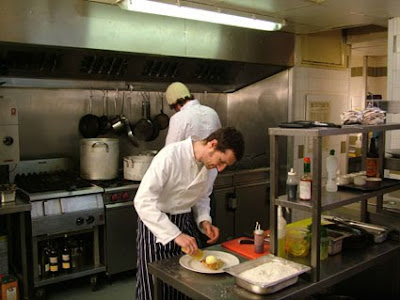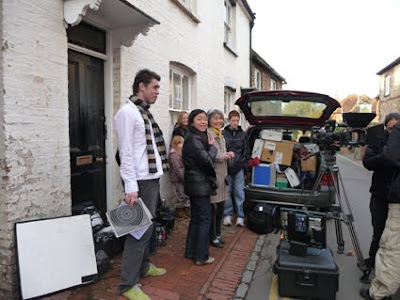This is part four in a seven part series on finding the right locations.
Right so we had found our restaurant now we needed the kitchen. Considering we used three separate locations in Lewes, Brighton and Alfriston to create “The Amble Inn” (an exterior scene was shot at the Moonrakers in Alfriston) it was vital that all the locations were seamless. Finding a kitchen that would fit and be believable as the kitchen of The Rainbow Inn proved to be immensely difficult. The kitchen at the Rainbow Inn although quite big had incredibly low ceilings and narrow spaces, and the set up meant that unfortunately we couldn’t use it. So we had to find an alternative. We visited kitchen after kitchen and they all were either too large or industrial, too small with the wrong equipment or logistically just impossible to film in.
This was the location that had us pulling our hair out, time was running out, and it seemed every kitchen we visited was just one disappointment after another. That is until just as we began to think we had exhausted all our options Dan and I saw the kitchen in The Master Mariner in Brighton. It was perfect -the right size, feel, look and layout and it was almost ideal for filming. When it came to getting permission, we had met Asher the owner before so he knew us. We told him all about our film and what we had set out to achieve, and luckily for us Asher also has a real love for film so was happy to give us permission to use it.
We had finally caught a break and found our kitchen. I remember at the time we had a hundred and one other things on our plate with pre production and securing our kitchen that day was a much needed bit of success and good news for us.
Vist The Master Mariner, in Brighton Marina:
http://www.the-master-mariner.co.uk/ This was the location that had us pulling our hair out, time was running out, and it seemed every kitchen we visited was just one disappointment after another. That is until just as we began to think we had exhausted all our options Dan and I saw the kitchen in The Master Mariner in Brighton. It was perfect -the right size, feel, look and layout and it was almost ideal for filming. When it came to getting permission, we had met Asher the owner before so he knew us. We told him all about our film and what we had set out to achieve, and luckily for us Asher also has a real love for film so was happy to give us permission to use it.
We had finally caught a break and found our kitchen. I remember at the time we had a hundred and one other things on our plate with pre production and securing our kitchen that day was a much needed bit of success and good news for us.
Vist The Master Mariner, in Brighton Marina:



















